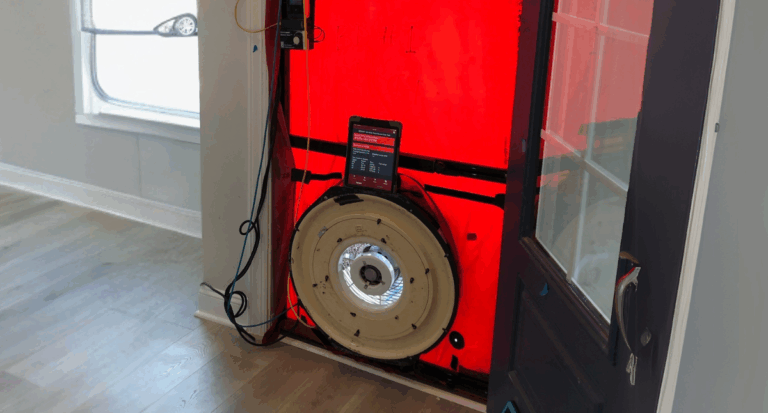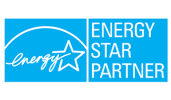Building a high performing, high quality home with reduced environmental impacts are all components that go into building a healthier home. But what exactly does that mean? What is a healthy home? What isn’t a healthy home? How do you build one? These are all great questions that often times go unanswered. This post dives into some of these questions and provides answers that may be helpful to you.
New home smell
Let’s take a step back and think about it from the buyer’s perspective. What is the first thing a person notices when walking into a brand new home? The door? Crown molding? The beautiful marble counter tops? I’m sure everyone admires the amazing details. However, the one thing that will resonate in the home buyer’s mind is the smell. Does “new car smell” sound familiar? Well, the same idea also applies when walking into a newly constructed home. Whether or not a person enjoys that smell is one thing. But the smell of fresh paint and newly laid carpet is one that can’t be ignored.
I’m sure at this point you’re wondering what does the smell of a newly constructed home have to do with it being healthy? Actually a lot. Do you ever stop and think about 1) what that smell is and 2) how it affects our bodies? Most people don’t. But for some this smell is concerning and for good reason. It is widely recognized across scientific communities that this smell is attributed to VOCs.
VOCs and their presence in homes
Also known as Volatile Organic Compounds, VOCs are organic compounds that release gas. They can be found in many products like solvents, glues, adhesives, paints, carpets, cabinets, caulking, and more. In addition to these building materials, VOCs can also be found in products that we use each day. Continued exposure to chemicals like VOCs can cause adverse health issues that can affect us as humans in both the short and long term. Research suggests that VOCs are close to 10x more potent indoors than they would be outdoors. And since they are fresh within a newly constructed home, they usually linger around for weeks.
Adverse health effects according to the U.S. Environmental Protection Agency include but are not limited to:
- Eye, nose, and throat irritation
- Headaches, loss of coordination, nausea
- Damage to liver, kidney, and central nervous system
- Some organics can cause cancer in animals, some are suspected or known to cause cancer in humans
Other factors that contribute to poor health
It’s important to note that VOCs are not the only factors that are looked at when constructing a healthier home. Indoor air quality can also be affected from a number of standard building procedures.
- Moisture and mold problems;
- Insufficient ventilation; and
- Poor air filtration
Are just a few other items that can potentially lead to health issues. Gambling on health is a game that many people would rather not play. Fortunately, there are homes that are built green with products that keep health in mind. Furthermore, there are a few certification standards that builders can build to to ensure that their homes are healthier in comparison to the standard built house.
The difference in building a greener, healthier home
So what are builders doing today to build a healthier home? Certification programs like Home Innovation Lab’s NGBS Green are great because they recognize the effects that certain building materials and practices have on the families who live in them. When certifying a home, NGBS Green focuses on three primary attributes: healthy homes, lower operating costs , and sustainable living. For the purposes of this post, we’ll discuss healthy homes.
To ensure that a home is healthier than its standard counterpart, NGBS Green has standards in place to make sure that homes are:
- Providing fresh air ventilation that improves indoor air quality;
- Limiting pollutants and contaminants in the home;
- Preventing moisture problems that can contribute to mold and attract pests; and
- Intentionally selecting building products labeled as low or no VOC.
NGBS Green homes achieve these goals in a number of ways. The one that stands out the most is through the Green Certified Product Program. The Green Certified Product Program features an online database of products. It’s designed to help designers and builders easily find products that can help their home earn an NGBS Green certification. The database provides comprehensive information on hundreds of building products that can help their projects be healthier, sustainable, efficient, and high performing.
Some of these building products include low-VOC emitting cabinets, formaldehyde-free insulation, low-VOC paints, HVAC systems that attack indoor air contaminants like particles, mold, mildew, bacteria, chemical vapor, and so much more.
Other Green Certifications
Aside from NGBS green, the United States Green Building Council’s LEED for Homes also has building standards aimed at improving indoor air quality and using better materials and resources. LEED Homes encourage the use of environmentally-preferable products during construction. This is to not only be conscious of human health but the health of the environment as well.
The U.S. Environmental Protection Agency’s Indoor airPLUS program helps new home builders improve the quality of indoor air by requiring products and practices that help minimize exposure to airborne pollutants and contaminants. The program was created to help builders meet the growing consumer demand for healthier homes with improved air quality.
Third-party raters
Finding a third-party rater to help you build a healthier home is key. Your rater should be knowledgeable of a variety of programs so they can recommend one that will fit your project’s needs. Having a third-party rater like Southern Energy Management will put your home under rigorous performance testing to make sure it meets the required standards to be a healthier home.
Builders may be eligible for numerous utility, state, and federal incentives for building healthier homes. Southern Energy Management previously covered a number of ways that you can earn cash back for building to a certain standard.















